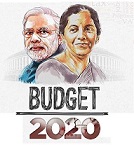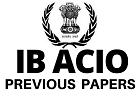sponsored links
What Does RBI Governor Do ?
- He sits at the Central Office of the Reserve Bank (which was initially established in Calcutta but was permanently moved to Mumbai in 1937) and formulates all the policies.
- Ofcourse, he cant sign on every note issued by RBI as I was thinking, but His autograph appears on all currency notes and he controls the country's monetary, currency and credit systems.
- In simple words, we can call him the bankers' banker. He is also the banker to the government.
- He totally influences a wide range of micro and macro economic issues in the country.
- His actions influence not only the entire banking system, but also the stock markets, the economy and people's lives in general. Indeed, if he sneezes, the markets tend to catch a cold.
- He heads an institution which is the sole authority for issuing bank notes. The central bank chief also supervises all banking operations in the country. He supervises and administers exchange control and banking regulations.
- Besides administering the government's policy, he also issues licenses for new banks, private banks and foreign banks.
- He helps formulates, implement and monitor the monetary policy. The objective is to maintain price stability and ensure adequate flow of credit to productive sectors.
- The central bank chief announces the biannual Monetary and Credit Policy. The governor announces the changes (if any) in the policy for the year: whether there will be a cut in the cash reserve ratio, bank rate, lending rate, and interest rate. It will also project the gross domestic product growth of the country for the year.
- He controls the country's interest rates on deposits and advances, but only to the extent of prescribing interest rate on saving accounts and a minimum lending rate. He prescribes the minimum cash reserve and liquid assets to be maintained as a ratio of net demand and time liabilities, and also lays down norms for investments in other assets by primary co-operative banks.
- He regulates and supervises the nation's financial system. He sets down broad parameters of banking operations within which the country's banking and financial system functions. The aim is to maintain public confidence in the system, protect depositors' interest and provide cost-effective banking services to the public.
- He manages the Foreign Exchange Management Act, 1999 to facilitate external trade and payment and promote orderly development and maintenance of foreign exchange market in India.
- He monitors the issues and exchange (or destruction) of currency and coins not fit for circulation to give the public adequate quantity of supplies of currency notes and coins and in good quality.
- He also monitors the implementation of government-sponsored poverty alleviation schemes.
- He plays a vital role in helping promote functions to support national objectives.
- He, with his deputy governors constantly reviews rules and regulations imported by RBI to make them more customer-friendly.
- He also governs and supervises primary co-operative banks, popularly known as 'urban co-operative banks,' through his Urban Banks Department.
- The RBI governor also has a say in monitoring and facilitating flow of credit to rural, agricultural and small-scale industries' sectors, framing policies on priority sector lending, giving support to agriculture banks, and regulates regional rural banks, state/central co-operative banks and local area banks.
- Present Governor of RBI is Mr. Urjit Patel.
That's all for now Friends. Hope you enjoyed this post. Happy Reading :)
sponsored links










 English Vocabulary from
English Vocabulary from












Thnq
ReplyDeleteTHANKS
ReplyDeletethnxxx...
ReplyDeletegood work , needed
ReplyDeletethanx
Thanks a lot for your effort!!!!
ReplyDeleteThankx, It is Knowledgefull...
ReplyDeletethanks...
ReplyDeletethnx admin of this site.....:) u r vry helpful....
ReplyDeletepresent governor is raghuram rajan
ReplyDeleteThanqu very much sir
ReplyDeleteThnk u
ReplyDeleteVery well done, keep on helping us....
ReplyDeleteNice job sir thank u so much!
ReplyDeletethank u very much...
ReplyDeletethank you a million
ReplyDeleteGreat Material
ReplyDeletepresent gdp rate?
ReplyDeletethnx
ReplyDeleteSBI CLREK 2014 recruitement kab hoga........ can u gv d site plsssssssssss
ReplyDeleteon wchich basis RBI make notes or press notes????
ReplyDeletethanks :)
ReplyDeletethank you :)
ReplyDeleteAwesome!
ReplyDeleteCurrent deputy governors of RBI are: R. Gandhi, Urjit Patel and H. R. Khan
ReplyDeleteI enjoyed your post, thanks!
ReplyDeletecurrent deputy governors of RBI are
ReplyDelete1.H.R. Khan
2.Dr. Urjit Patel
3.R Gandhi
4.Subhash Sheoratan Mundra